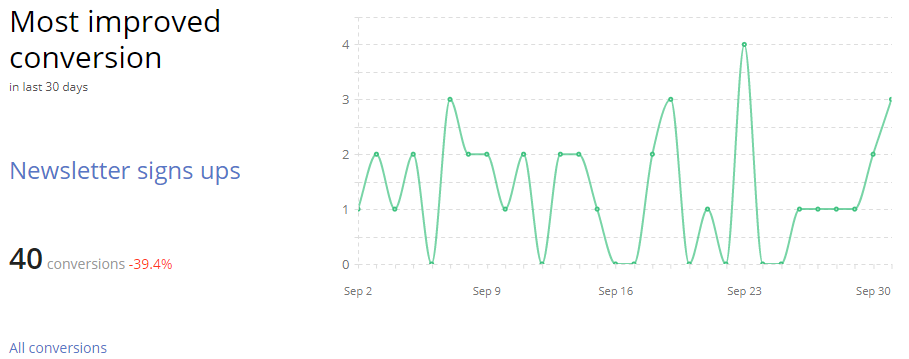Answer – use the Sitefinity DEC
Here’s How:
Key elements and activities used to derive the most benefit from the Sitefinity Digital Experience Cloud include knowing your audience, then how to connect directly with them. As well as understanding the value of a download or page view.
Why profile your audience?
Do more with your data. Gain a true understanding of your visitors and customers to make your analytics work for you. Gathering data from multiple channels in isolation, can give a fair indication of what customers are doing, it’s not as effective at telling you why. Or more importantly, the effect those interactions have on a customer’s decision to convert.
Having an extensive and deep context of who you are talking to, enables you to see interactions between anonymous site visitors, known contacts or existing customers, as well as various aspects of the company’s digital marketing function. Understanding the who and the why allows you to make better marketing decisions about how to design future customer journeys, display content, build a sales funnel and more.
By profiling your audience, you are able to classify the visitors that interact with your company so that you engage them more efficiently and optimise your messaging for each of them.
How to create persona profiles with specific characteristics and preferences
Behavioural traits – A ‘persona’ is a fictional character-type that represents real customer requirements, emotions and similar behavioural patterns. Putting real thought into the type of visitor you want to attract pays big dividends – Who are they? What do they do? etc Using visitors’ behavioural patterns, you can classify them and create rich persona profiles that best describe the specific type, or category, of visitor you want to engage with and retain.
Scoring – To transform usage data into meaningful insight, set scoring rules that define a contact’s persona. Scores are measured as points that a contact earns when completing a certain activity or interaction on the site. For example, when a contact views a page, downloads a whitepaper, posts comments, or subscribes to an email campaign or newsletter, the contact earns a specific number of points for each of these activities. For each persona, you define a threshold of points and when a contact scores enough points to pass this threshold, they are classified to that persona.
A contact may be attributed to more than one persona if they pass the threshold of these personas. There is always going to be a persona that best matches the contact and is reflected by the largest percentage score above that specific persona’s threshold. You can create as many personas as required for your site. Each persona has a set of characteristics that define its demographic and behavioural patterns.
Persona scoring rules allow you to distinguish between visitors who browse a few pages on the site and accumulate points by chance, and visitors who should indeed be classified under a specific persona.
Personalisation – When creating personalisation segments (see Personalisation in our next issue) in the Sitefinity CMS, you can base the segments on any persona that you defined in the DEC, enabling the delivery of personalised content to contacts that represent, or are associated to, a certain persona. Meaning different people get different information but all paths will lead to the desired action – engaging with your website and ultimately, you.
Lead scoring
Lead scoring is the core method you use to rank the visitors you define as “leads” and measure their readiness to convert. Generally speaking, with lead scoring you would rank prospects according to a predetermined scale. Once your visitors pass the specific thresholds, you can prioritise and notify your sales team to contact ‘qualified leads’ – by telephone or personal emails. Those ‘leads’ that are still below the required scores, can be nurtured with relevant, personalised content with the aim to increase their interest and scores.
Attribution
Our goal here is to understand the value of a download or page view, display ad, podcast, video, white paper or other interactions in each customer’s buying journey. Hypothetically, this makes it easier to decide what tactics and content you should develop. However, historically, many attribution offerings have struggled to live up to their promise. Not so with Sitefinity.
Crucial to attribution measurement is not merely if contacts hit a touchpoint, but whether this interaction actually increases the conversion rate for a particular report.
To derive the most of your digital marketing efforts you want to maximize the conversion rate and influence the purchasing decisions of your customers and then track what is affecting conversion rates. You define your high-level marketing goals and conversions you hope to achieve. These entail the strategy and initiatives you will use to attract and retain customers via your website.
You also track a number of key engagement points of contacts on your website. The impact of these touchpoints is measured to indicate if and to what degree they influence contacts’ conversion rates.
Having ample marketing attribution reports helps you understand which touchpoints or interactions, have the biggest impact on conversion rates and focus and optimise your marketing efforts.
In the Sitefinity DEC, you select interactions, define conditions, track conversions and create high-level conversion reports to measure, which successful interactions from your website, for example, are deemed as valid conversions for the various scenarios and for different customer segments or personas. You will also define a specific timeframe for tracking, a definition of customers whose behaviour will be tracked, any interactions that are not relevant to these reports and any recommendations.

More importantly though, this feature uses past conversion data to provide predictions and recommendations, helping marketers with their decisions and future campaigns.
This predictive analytical engine built into Sitefinity, helps you to augment your conversion rates so you can concentrate your efforts on the activities and initiatives that convey the greatest impact. Sound predictions constantly provide new recommendations for a suitable course of action to funnel customers toward a desired action.
This real-time, actionable data reveals possible trends that enable you to target your activities and plan and modify marketing campaigns in periods that are virtually in real time.
The Sitefinity DEC applies machine learning to relate how groups of customers and prospects interact through all channels. Interestingly though, the platform also provides specific recommendations on how to move those customers toward their goals more effectively.

Want to know how to use DEC campaigns to design personalised customer experiences and increase your conversion rates? Look out for our next Musing coming soon…
KRS is an authorised SitefinityTM reseller and development partner.





